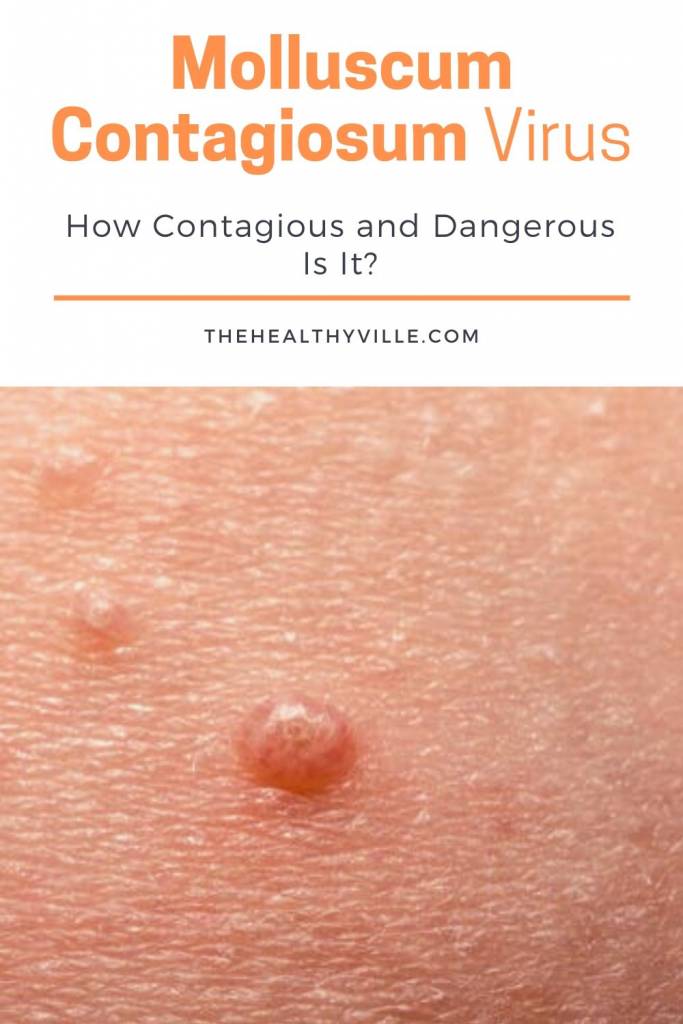Molluscum contagiosum virus causes a benign viral skin infection. It is not dangerous and can go away on its own, but you need to be careful not to infect others with it.
Molluscum contagiosum lesions appear quite frequently in children with 2 to 5 years of age. For adults, it is normally considered a sexually transmitted disease. Its contagion is variable, since it is due to direct contact with the injury or some object that has had contact with it, such as towels, clothes, toys, etc.
The incubation period is 2 to 7 weeks after viral exposure. It occurs with a higher incidence in children, sexually active adults and people with alterations in cellular immunity.
Its incidence is higher in the summer, since it is one of the seasons where the skin is most exposed, but it can occur throughout the year.
But do you really know what molluscum contagiosum consists of? We will explain it below.
What is molluscum contagiosum virus and how does it manifest itself?
Molluscum contagiosum virus causes a benign viral skin infection. It is not dangerous and can go away on its own. It is caused by a poxvirus.
After the incubation period, lesions such as papules or nodules 1 to 2 millimeters in diameter appear on the skin. They can occur anywhere on the body, except the palms and soles of the feet. They are located more frequently in the following areas:
- Face
- Neck
- Trunk
- Arms and hands
They are elevated lesions, with a pearl appearance and central umbilication. Although these injuries do not cause any symptoms, they can sometimes be complicated. They may become irritated, eczematized, overinfected, or simply located in more sensitive areas, such as the genitals and eyelids.
Diagnosis of molluscum contagiosum
This pathology is diagnosed mainly by visual examination of the lesion by the right professional at the time of the consultation. In fact, they are often discovered by chance on physical examinations.
The use of a dermatoscope can help better visualize the characteristic vesicles and orifices. Sometimes doctors perform a scraping or a sampling or biopsy to confirm the diagnosis by histopathological study.
The duration of injuries varies from a week to a year and a half. During this period, some injuries may go away on their own and new ones may develop. Molluscum contagiosum virus only affects the body’s surface and never spreads further.
In the vast majority of cases, molluscs heal without leaving any type of scar or mark, except in specific cases where there was a lot of inflammation involved or a secondary infection.
What treatment options do we have?
Treatment is not necessary if the lesions are not bothersome, as they disappear on their own in a few months or years. However, you must cover them to reduce the risk of contagion.
If necessary, the treatment options to choose from will depend on the age of the patient, the extent of the lesions and if any other skin pathology occurs. The most common treatments are as follows:
- Scraping or curettage, after application of anesthetic cream: surgical procedure that consists in removing the molluscum contagiosum.
- Cryotherapy or cooling: destroys the lesions through freezing with liquid nitrogen and subsequent necrosis. It is a fast and efficient method.
- Pharmacological treatment or immunotherapy: prescription of drugs that change the body’s immune response and act against the virus that caused the infection. You would need to apply these creams for weeks or months.
- Photodynamic therapy: you need to apply a photosensitizing cream and a red light source.
- Electrocautery or laser burned: can be painful and often leaves scars.
Recommendations to prevent contagion
Some recommendations to avoid the spread of molluscum are the following:
- Avoid direct contact with skin lesions.
- Do not share towels or personal items with affected people.
- Be careful in sexual relations: avoid direct contact until the lesions have completely disappeared.
- Wash hands frequently.
- Take care of the skin using hygiene products that are not irritating.
- Use moisturizing creams.
- Wear clothing that covers the affected areas, or a dressing or gauze.
- Choose the shower instead of the bath.
- Avoid scratching or shaving the affected skin, as this can spread the lesions to other parts of the body and cause autoinoculation.
- Avoid shaving with a razor blade because it can also spread injuries.
Conclusion
Although the injuries caused by molluscum contagiosum virus are not dangerous to health, they can cause serious emotional and psychological problems. Also, we must not forget that they are contagious.
Therefore, it is essential to act quickly and with the appropriate treatment, without putting your health at risk. In case of detecting any abnormality in the skin, the dermatologist should be consulted.
Don’t forget to SHARE all the info about molluscum contagiosum virus with your friends and family on your social networks!

